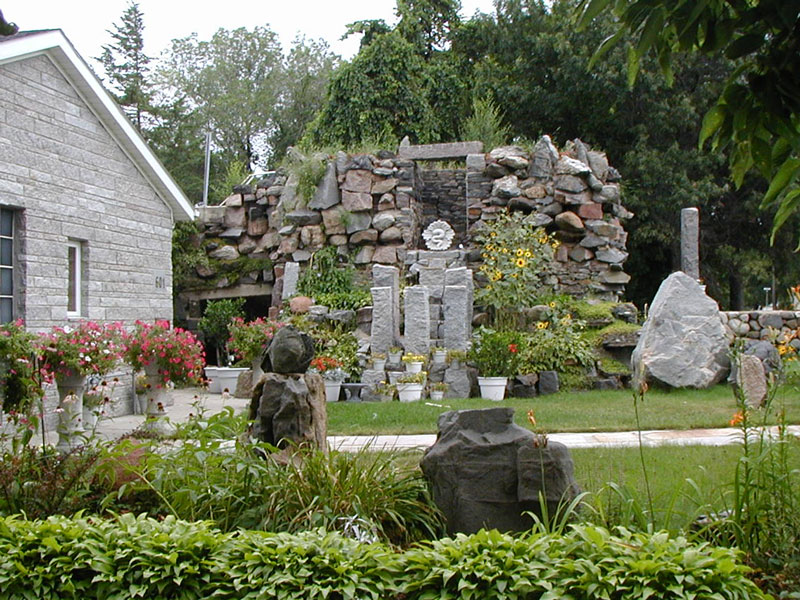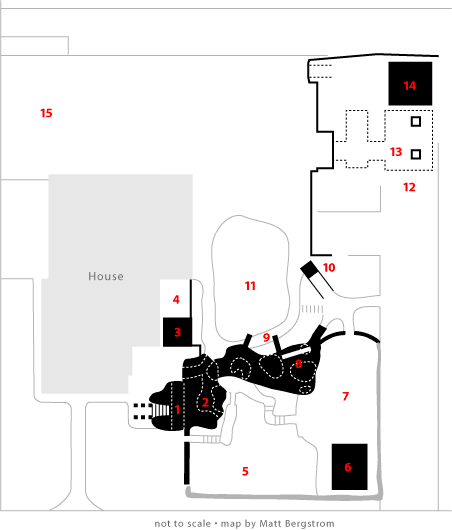
The Molehill - 3rd Avenue North, Sauk Rapids, Minnesota (by appointment only)

This backyard construction was built by Louis Wippich from about 1924 to 1958. It seems to have started out as a sunken garden with a large lily pond and a formal garden featuring a wooden Grecian temple. But at some point Wippich was inspired to go in a new direction. Over part of the pond he assembled piles of large field stones in rugged man-made "mountains". He added high square towers of granite posts, thin cantilevered platforms and raised terraces atop rock pillars. The heavy stone constructions seem to defy gravity, or at least all sense of safety and durability in construction.
Wippich was an ardent Theosophist, and in some sense the garden embodies his beliefs in the infinite possibilities inherent in mankind, the ability of each soul to become divine directly, without interference of gods or hierarchies. He wrote several books explaining his interpretation of Theosophist principles, but none sold well. Like his writings and his philosophy, the garden is a labyrinth of suggestions, codes, connections and possible meanings that is difficult for the casual observer to understand. What is the purpose or meaning of these odd structures?
For 23 years, Wippich worked for the Great Northern Railroad, which connects St. Paul to Seattle. He travelled widely across the U.S. and seems to have been fascinated by the rugged lands of the West and Southwest, as were so many rock garden builders. His home town of Sauk Rapids is surrounded by many granite quarries, so it was simple enough to acquire both rough stone and rejected cut and polished blocks to build his garden. Wippich got leftover rails and old boxcars from the railroad for materials, and built a small house for himself and another for rental property. He worked alone, or with hired help from neighborhood teenagers, lifting the heavy granite blocks into place, mixing the cement, piling earth and rock. In times of rest he entertained visitors to his garden with his theories and philosophy of life.
Louis Wippich died in 1973, and for many years the garden was neglected and vandalized. The creepers and vines grew wild while the sunken gardens filled with trash. Fortunately the current owners have done much to restore the garden and care for it, but the site is not open to the general public. It doesn't seem that it ever was intended as a public garden. Aside from the physical dangers of the platforms without railings, drop-offs and precariously assembled towers, the meanings of the structures are themselves obscure so that simply walking through the garden is an exercise in confusion. Does this stairway lead somewhere? No, only to the edge of a pit. Is this bridge safe enough to cross? I wouldn't want to trust it. Is this tunnel only for show instead of actual passage? Only Louis Wippich really knew.

|
References and Links to the Molehill
 |